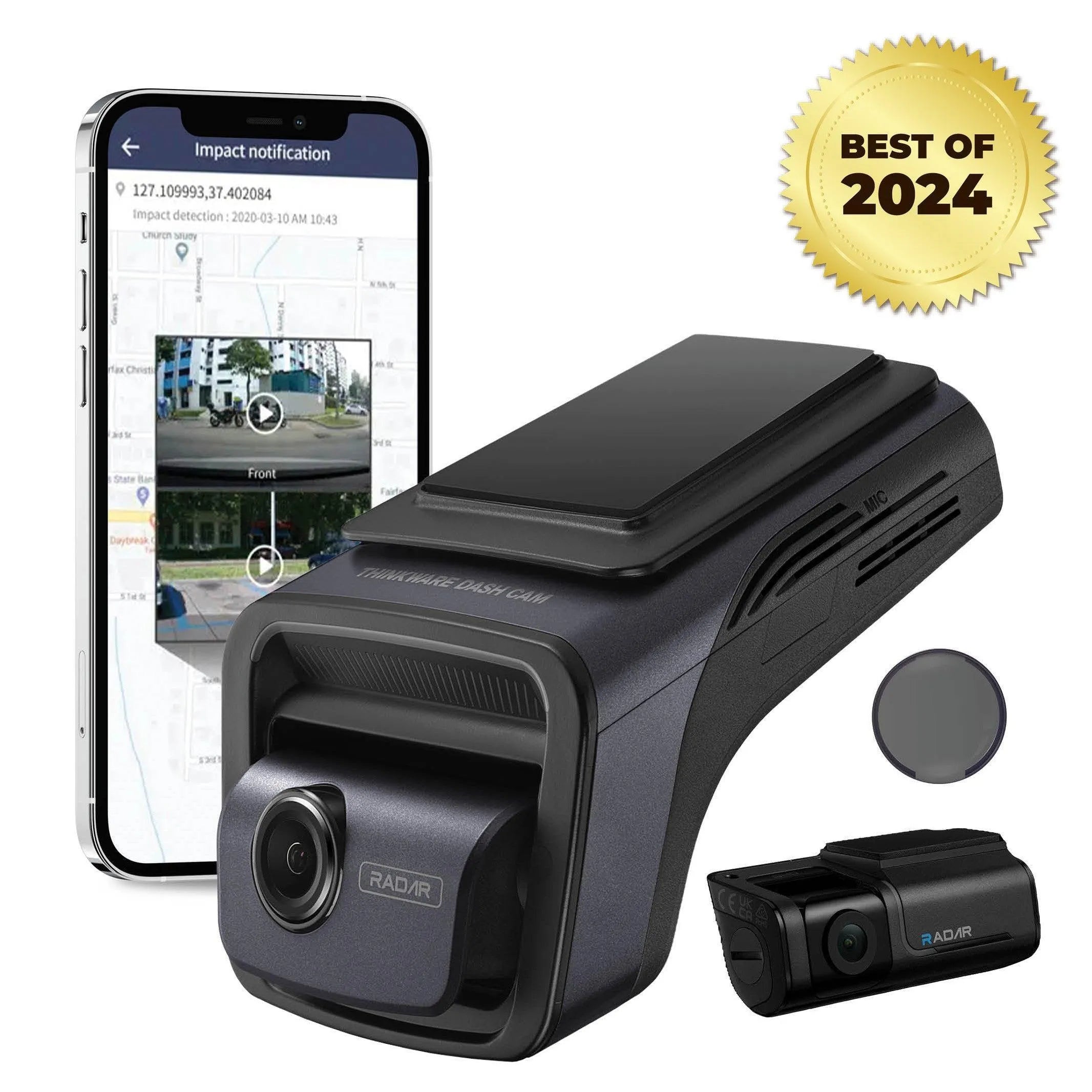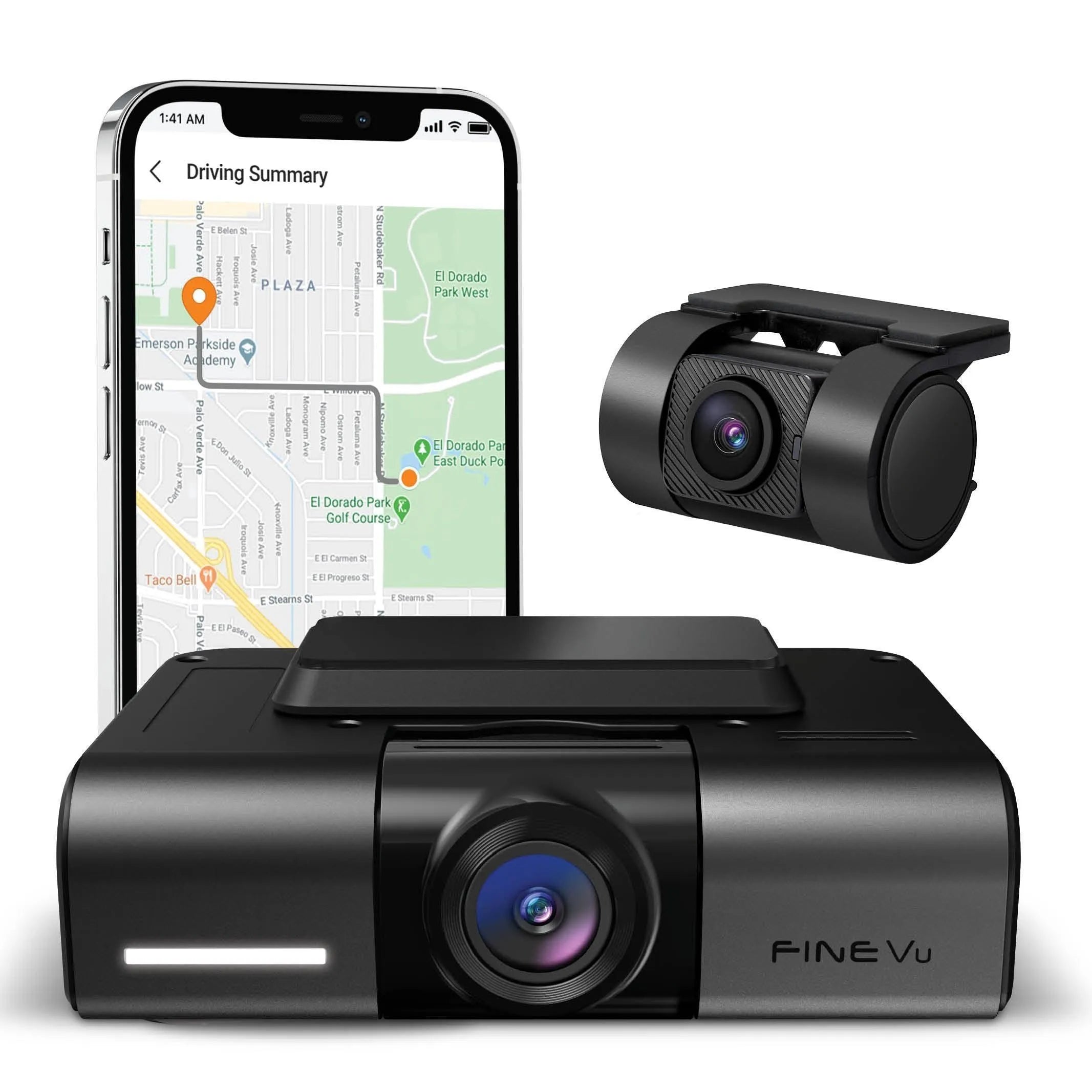How does the Advanced Driver Assistance Systems feature keep you safe?
What is ADAS in Dash Cams?
Advanced Driver Assistance Systems (ADAS)
Did you know that nearly 93% of car accidents are caused by human error, with distracted driving being one of the leading causes? But thanks to innovation, automotive manufacturers have begun adding a feature called Advanced Driver Assistance Systems or ADAS.
ADAS can help prevent distracted driving, and avoid mishaps on the road. In this article, we will dive into this dash cam technology feature designed to prevent unwanted incidents from happening, simply by notifying drivers of the possible dangers on the road ahead of time – the Advanced Driver Assistance Systems, aka ADAS.
What is ADAS?
ADAS, or Advanced Driver Assistance Systems, is a system designed to warn drivers in crucial road situations. Using artificial intelligence, it monitors the vehicle's surroundings, detects potential threats, and delivers real-time notifications to keep the driver stay aware and cautious.
While plenty of modern vehicles have ADAS built-in to them, some Dash Cams ensure that no driver is left behind by having these features built-in, allowing any vehicle to stay safe on the road, calibrating to your specific vehicle.
However, not all dash cams are equipped with ADAS, as this is an advanced safety feature, commonly present in premium cameras like FineVu and Thinkware.
What are the types of ADAS?
ADAS offers many different features, which will differ depending on the system offering them. Here we’ll cover the more common ones found in Thinkware and FineVu cameras. These features can be disabled and enabled as needed.
1. Front Vehicle Departure Warning
The Front Vehicle Departure Warning signals that the vehicle in front of you has started to move when you are at a full stop, helping you stick to the flow of traffic.
2. Lane Departure Warning System
Lane Departure Warning monitors your vehicle's position within the lane, providing warnings if the driver unintentionally drifts out of the lane without using the turn signal. This is a crucial feature for preventing accidents caused by distracted or drowsy driving.
Many Lane Departure Warning systems have speed minimums, so they only engage at higher speeds.
3. Front Collision Warning System (FCWS)
Meanwhile, the Front Collision Warning System alerts the driver when the distance between them and the vehicle in front is too close.
For Thinkware dash cams, there are 4 different visual FCWS notifications: 2 low-speed FCWS and 2 high-speed FCWS notifications. The low speed or ‘Urban Forward Collision Warning System’ (uFCWS) is triggered when the vehicle is travelling at 30 kmh (19 mph) or lower, while the regular FCWS is triggered when the vehicle is travelling above 30 kmh (19 mph).
4. Rear Collision Warning System
Present in advanced dual-channel dash cams like the Thinkware U3000, the radar-based Rear Collision Warning system acts as a second set of eyes in the back and can assist in preventing rear-end incidents. If a car comes from behind and the system determines that an accident is likely, it helps notify the driver of the approaching vehicle.
5. Safety Camera Alerts
Thinkware dash cams like the Thinkware F70 Pro are also equipped with safety camera alert systems. These systems use GPS data and a comprehensive database of camera locations to provide real-time warnings to drivers as they approach intersections with red light cameras and other traffic enforcement cameras. This is highly recommended for drivers who typically go to unfamiliar places for their day to day operations, such as fleets.
6. Fatigue Alerts
Some ADAS systems, such as FineVu, can also provide further warnings, such as Fatigue alerts. When a person has been driving for an extended period of time, the dash cam tells them the number of hours they have driven and urges them to take a short rest. For example, FineVu dash cams will say "You've been driving for __ hours. Please take a short break."
What are the requirements to activate ADAS?
Not all dash cams have ADAS, and those with one still require specific features to activate this system. Some ADAS features, particularly those related to speed and location, rely on GPS data, so you have to make sure that your dash cam has a GPS module. The Thinkware U3000, U1000, and Q1000 have ADAS built-in, while older models like the F200 Pro require a separate GPS antenna.
Of course, you have to make sure that the ADAS setting on your dash cam is on. These settings often include options to adjust sensitivity, warning thresholds, and specific features you may want to enable or disable. You can adjust them through your dash cam’s dedicated mobile app.
Note that the above systems work best in light and clear environments, depending heavily on road conditions. Moreover, some ADAS features may necessitate calibration of your vehicle’s body to ensure proper operation. When we say calibration operations, we mean altering camera angles or setting the proper alignment for lane departure alerts, based on the dashcam manufacturer's recommendations. There is also a calibrate button in the settings of the camera for it to calibrate to your specific vehicle’s body.
ADAS, Your Co-Pilots on the Road
Dash cameras with Advanced Driver Assist Systems (ADAS) serve as your trusted co-pilots, monitoring your vehicle's surroundings, offering real-time alerts, and promoting driver and passenger safety.
Beyond protection, this feature also improves traffic flow, increases compliance with regulations, and prevents accidents. In essence, dash cams with ADAS like Thinkware add an extra layer of safety, providing peace of mind and a more responsible, accident-free driving experience!



